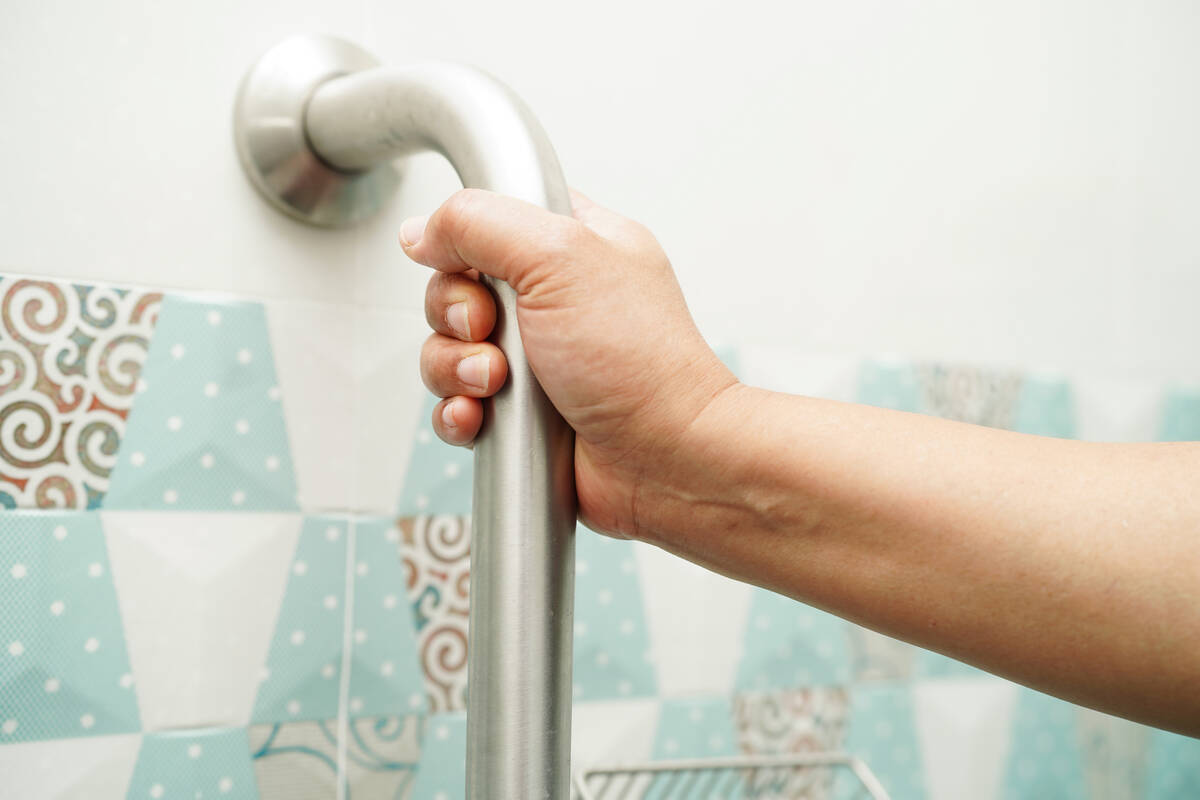Grab bar should be solidly anchored to wall framing
Q: My father nearly slipped and fell in the shower. I want to install a grab bar to help prevent this from happening again. The shower is average in size and has ceramic tile on the walls. Any suggestions?
A: You are smart to consider a grab bar, but make sure it’s solidly anchored to the wall framing when you install it.
The wall framing will dictate where the grab bar will be placed, but you must determine how it will be placed. Does your father stand up in the shower, or does he sit down on a bath chair? Does he have any physical disabilities that need to be considered?
As the installer, you must know the answers to these questions to place the grab bar where it will provide the most protection.
A vertical bar mounted at the entrance usually works best for people who need help getting in and out of the bath or shower. A horizontal bar is best for people who stand up, and a diagonal bar helps those who sit down to get back up.
Generally, for a shower stall, the grab bar should be mounted between 36 inches and 40 inches from the floor. If your father is using a tub/shower, the bar should be mounted between 24 inches and 48 inches from the floor.
Grab bars come in different lengths and finishes and can be purchased at a home improvement center. The prices start at around $30.
The most critical and time-consuming part of this project is finding the wall framing and securing the grab bar to it. If the tile doesn’t go all the way to the ceiling, a stud finder (about $20) will help. You want to anchor the grab bar in the middle of the stud’s width for maximum security.
Sometimes a stud finder gives a false reading, such as showing that a pipe or conduit is a stud. Therefore, when you believe you have found a stud, use a small finish nail (such as a 4d) and gently tap it with a hammer (above where the tile ends) to determine the exact location and middle of the stud. Hold a level vertically and extend the marks down to the area where you will be mounting the grab bar.
If your tile goes all the way to the ceiling, the stud finder will be useless. However, the studs should be 16 inches on center. You can measure from the corners of the walls and get a rough idea of where a stud might be.
Also, if there is a room on the other side of the bathroom wall, you can remove the baseboard and look for the studs. Measure the distance from the corner and transfer the measurements to the bathroom side of the wall.
When you have a good idea of a stud’s location, drill a small hole in the grout line near the top of the wall. Obviously, the fewer holes, the better. Fill in any extra holes with matching grout or tub and tile caulk.
The next step is to drill holes for the mounting flange. Hold the grab bar in place and use a pencil to mark the holes (there are three for each end of the grab bar). Because of the size and configuration of the mounting flange, two of the three screws will be mounted in a stud, while the third screw will be mounted in a hollow-wall anchor.
Use a ⅛-inch glass and tile bit (about $10) in a variable speed drill. Start out on low speed until the bit chews through the glaze on the tile and then rev it up. Once you penetrate the tile substrate, make sure you hit the stud on two of the three holes.
Most grab bars come with No. 10 screws, but I prefer to use No. 12 stainless steel screws. You want to sink the screws at least 1 inch into the wood. Insert a nylon hollow-wall anchor into the third hole. Before you attach the grab bar to the wall, run a bead of silicone caulk around the perimeter to prevent water from entering the wall.
Test the strength of the installation by placing both hands on the grab bar and giving it a few good yanks.
Mike Klimek is a licensed contractor and owner of Las Vegas Handyman. Questions may be sent by email to handymanoflasvegas@msn.com. Or, mail to 4710 W. Dewey Drive, No. 100, Las Vegas, NV 89118. His web address is www.handymanoflasvegas.com.
Do-it-yourself
Project: Install a shower grab bar
Cost: From around $50
Time: 1-2 hours
Difficulty: ★★★


















